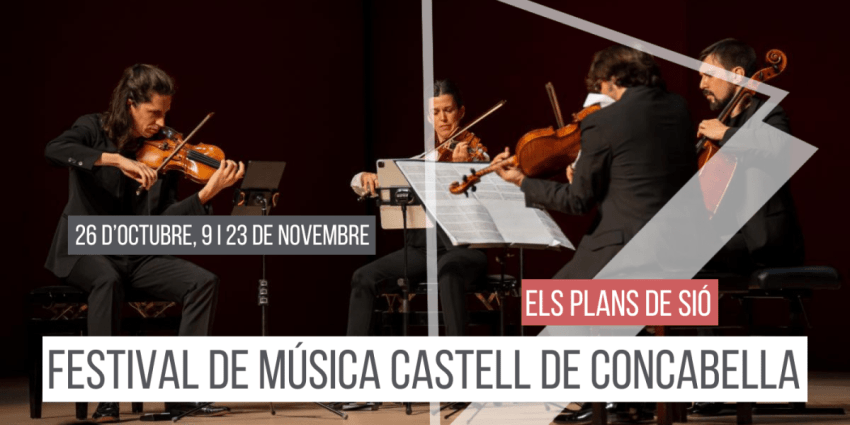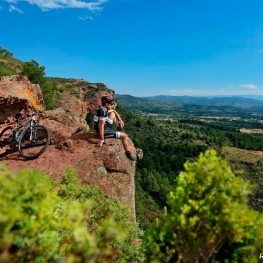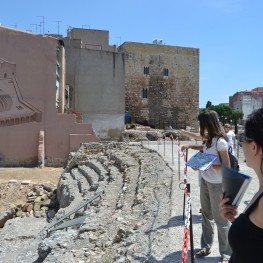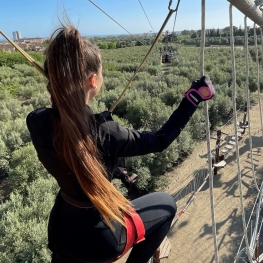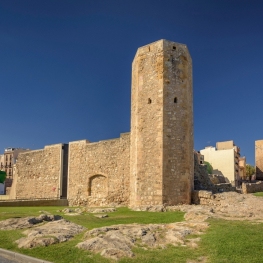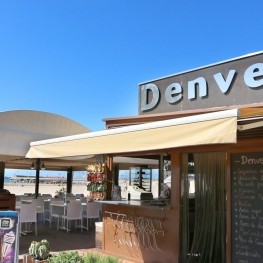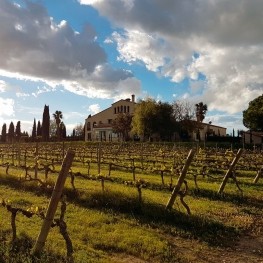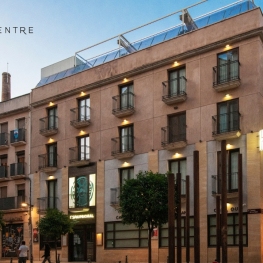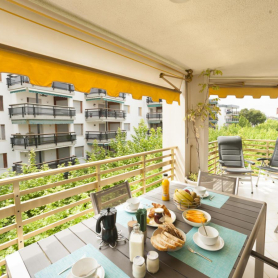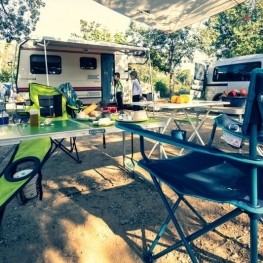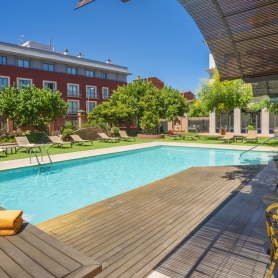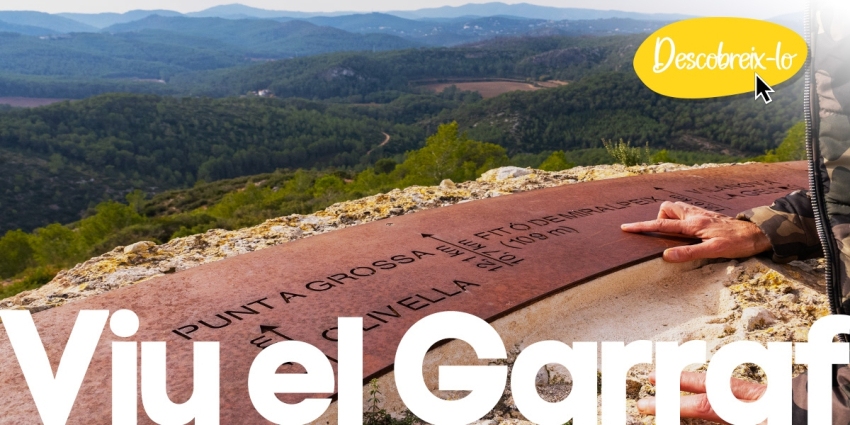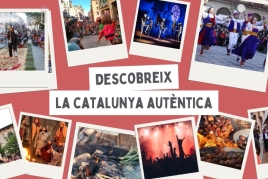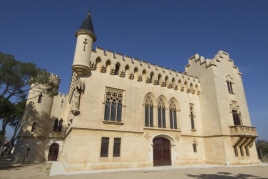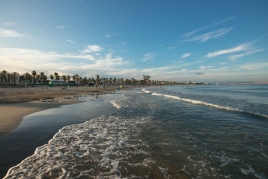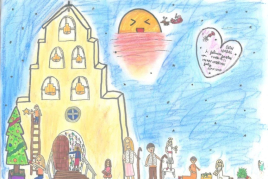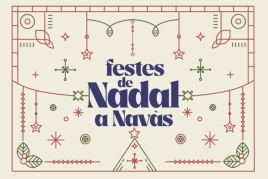Route of Modernism in Reus
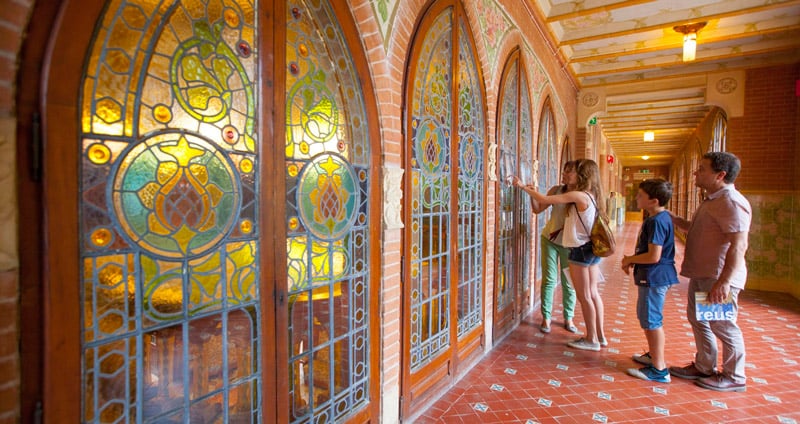
If you are of those that you love Art Nouveau architecture, a walk in Reus will leave you well satisfied! As you know, there are doubts about whether Antoni Gaudí was born in the capital of Lower Camp or in the nearby town of Riudoms.
What is clear is that the great architect lived in Reus his childhood and youth, but no building in the city bears his signature. Despite this singular fact, known as "the city of shopping" boils modernism everywhere, shows the cultural and commercial excitement that was in Reus late nineteenth and early twentieth centuries.
 The best place to start the tour is the iconic and busy Market Square. It is here that we find the Renaissance town hall, a lot of terraces where do the vermouth, and also a beautiful corner house: the Navàs house. Montaner, one of the great names of Modernism, designed this building with ground floor for business Joaquim Navàs tissue -trade that today still exists-and housing. Check with the tourist office in the square of Mercadal, when you can visit inside, as it is very important and very worthwhile. Furniture, glass, ceramics... all of modernist aesthetics, and turning this house possibly in one of the most beautiful in the country.
The best place to start the tour is the iconic and busy Market Square. It is here that we find the Renaissance town hall, a lot of terraces where do the vermouth, and also a beautiful corner house: the Navàs house. Montaner, one of the great names of Modernism, designed this building with ground floor for business Joaquim Navàs tissue -trade that today still exists-and housing. Check with the tourist office in the square of Mercadal, when you can visit inside, as it is very important and very worthwhile. Furniture, glass, ceramics... all of modernist aesthetics, and turning this house possibly in one of the most beautiful in the country.
 We said that the tourist office is located in the same square, and also a place of striking facade, in this case by modernist, but modern. Is the Gaudí Centre Reus. I Visit Him! This is a center of interpretation of the work of renowned architect, and at the same time claimed the roots of genius. First they will take you upstairs, where a spectacular audiovisual trialogue will introduce in the particular world of the thinker of the Sagrada Familia. Then a door opens, and come into models and reproductions of large fragments of his works. There are also interactive elements to better understand the Gaudi architecture, or the answers to many of the puzzles that have emerged around Antoni Gaudí.
We said that the tourist office is located in the same square, and also a place of striking facade, in this case by modernist, but modern. Is the Gaudí Centre Reus. I Visit Him! This is a center of interpretation of the work of renowned architect, and at the same time claimed the roots of genius. First they will take you upstairs, where a spectacular audiovisual trialogue will introduce in the particular world of the thinker of the Sagrada Familia. Then a door opens, and come into models and reproductions of large fragments of his works. There are also interactive elements to better understand the Gaudi architecture, or the answers to many of the puzzles that have emerged around Antoni Gaudí.
Caselles, the most prolific
 Make the path of Modernism will serve not only to know the buildings of this architectural era, but also to discover the streets of the capital of Lower Camp and squares. Immediately you will notice that it is a city with an intense commercial activity, possibly more than the Tarragona area, with dozens of shops in the downtown streets, a centenarian and family, and others that look signing international brands. A good example of commercial vitality is the street then we take off the Market Square, the Monterols. This is what leads to the Plaza de Prim, where the Fortuny Theater and the famous sculpture of General on the horse. Before reaching the square in that street, we find two Art Nouveau buildings: the Laguna and tent houses. Both of Pere Caselles i Tarrats. Influenced by Montaner, de Caselles know a lot of construction in the course of the itinerary, because the reusense applied his knowledge in civilian buildings as municipal architect and executed numerous private commissions. I must say that all modernist buildings in Reus are well indicated, since each has a front plate in which it is reported the name of its architect and years of construction.
Make the path of Modernism will serve not only to know the buildings of this architectural era, but also to discover the streets of the capital of Lower Camp and squares. Immediately you will notice that it is a city with an intense commercial activity, possibly more than the Tarragona area, with dozens of shops in the downtown streets, a centenarian and family, and others that look signing international brands. A good example of commercial vitality is the street then we take off the Market Square, the Monterols. This is what leads to the Plaza de Prim, where the Fortuny Theater and the famous sculpture of General on the horse. Before reaching the square in that street, we find two Art Nouveau buildings: the Laguna and tent houses. Both of Pere Caselles i Tarrats. Influenced by Montaner, de Caselles know a lot of construction in the course of the itinerary, because the reusense applied his knowledge in civilian buildings as municipal architect and executed numerous private commissions. I must say that all modernist buildings in Reus are well indicated, since each has a front plate in which it is reported the name of its architect and years of construction.
 At the square, turn right through the suburb of Santa Ana, where we walk a few meters before we find two new modernist buildings. One is the Sierra house, Joan Rubió, he noted for its main facade made all her stone. The other is the house Marco, the son of Montaner, the architect Pere Domènech i Roura, a residential building and in the late Modernism, 1926, cornerback and with a curious gallery of different geometric shapes.
At the square, turn right through the suburb of Santa Ana, where we walk a few meters before we find two new modernist buildings. One is the Sierra house, Joan Rubió, he noted for its main facade made all her stone. The other is the house Marco, the son of Montaner, the architect Pere Domènech i Roura, a residential building and in the late Modernism, 1926, cornerback and with a curious gallery of different geometric shapes.
Street Llovera
 We're back where we come from, and when we come back we Prim Square this time Llovera street, we are left with right. Is this the road reusense more modernist architecture along the street of San Juan where we'll get later. Check out these numbers: 12, 17, 19-21, and 47-49. They are not in any draw, but those of the Bartolí, Querol, Jordi Thomas and Punyed houses. The first of José Subietas, the only building of this master builder in Reus, and three of Caselles. As well as Caselles are the following buildings that meet. To go look, turn left onto the avenue Prat de la Riba when we reached the end of the street Llovera. First discover the simplicity of the Sardinian house, and just beyond the first modernist building that we found is not intended for housing but for training, because they are the schools that have the same name of the avenue and the first president of the Commonwealth Catalonia. Today beckon blue ceramic panels with drawings on white background, work of Francesc Labarta, representing four episodes of the New Testament relating to children.
We're back where we come from, and when we come back we Prim Square this time Llovera street, we are left with right. Is this the road reusense more modernist architecture along the street of San Juan where we'll get later. Check out these numbers: 12, 17, 19-21, and 47-49. They are not in any draw, but those of the Bartolí, Querol, Jordi Thomas and Punyed houses. The first of José Subietas, the only building of this master builder in Reus, and three of Caselles. As well as Caselles are the following buildings that meet. To go look, turn left onto the avenue Prat de la Riba when we reached the end of the street Llovera. First discover the simplicity of the Sardinian house, and just beyond the first modernist building that we found is not intended for housing but for training, because they are the schools that have the same name of the avenue and the first president of the Commonwealth Catalonia. Today beckon blue ceramic panels with drawings on white background, work of Francesc Labarta, representing four episodes of the New Testament relating to children.
Street San Juan
 If you go good time and I want to walk a little, you can now take the ride Sunyer left and, after the roundabout of the square of the Gooses, soon you will find the Enology Station and, after him, the slaughterhouse. There are two large buildings, and the first of Caselles, today houses the Regional Council of Lower Camp and other institutions. The best view of the assembly is from the south, but go turning to observe the many interesting outside elements. As for the Matadero, again Caselles intervened in this case in coordination with Francesc Borras, and one of the few remaining examples of nineteenth century industrial architecture in the city. Today inside, and with a perfect harmony between new uses and historical heritage, you will find the Central Library Xavier love you .
If you go good time and I want to walk a little, you can now take the ride Sunyer left and, after the roundabout of the square of the Gooses, soon you will find the Enology Station and, after him, the slaughterhouse. There are two large buildings, and the first of Caselles, today houses the Regional Council of Lower Camp and other institutions. The best view of the assembly is from the south, but go turning to observe the many interesting outside elements. As for the Matadero, again Caselles intervened in this case in coordination with Francesc Borras, and one of the few remaining examples of nineteenth century industrial architecture in the city. Today inside, and with a perfect harmony between new uses and historical heritage, you will find the Central Library Xavier love you .
 We'll have to go back for the same ride, and the square of the Gooses turn right to the whole street of San Juan, where, as was already mentioned, we will enjoy the presence of many modernist buildings. The first two of Montaner, the Gasull Rull house and home, quite different from each other. The Gasull house is ten years after the Rull house, and the architect shows an evolution towards Novecentismo. If you can enter the lobby, it's beautiful!, with yellow glazed pottery of reusense Hipòlit Montseny, and wrought iron railing. As for the neighboring house Rull, is one of the buildings that at all costs we must go see if you visit Reus not in vain is declared a Cultural Asset of national interest, and today there is the Municipal Institute of Cultural Action. On the facade, stone ground floor and brickwork the top two floors, there are many decorative elements inspired by medieval times, and symbols related to the owner of the house, the notary Pere Rull.
We'll have to go back for the same ride, and the square of the Gooses turn right to the whole street of San Juan, where, as was already mentioned, we will enjoy the presence of many modernist buildings. The first two of Montaner, the Gasull Rull house and home, quite different from each other. The Gasull house is ten years after the Rull house, and the architect shows an evolution towards Novecentismo. If you can enter the lobby, it's beautiful!, with yellow glazed pottery of reusense Hipòlit Montseny, and wrought iron railing. As for the neighboring house Rull, is one of the buildings that at all costs we must go see if you visit Reus not in vain is declared a Cultural Asset of national interest, and today there is the Municipal Institute of Cultural Action. On the facade, stone ground floor and brickwork the top two floors, there are many decorative elements inspired by medieval times, and symbols related to the owner of the house, the notary Pere Rull.
 Very different, but also modernist, it is the Tuberculosis Dispensary we found virtually front. It is Joan Rubió, and is separated from the street by a small garden, while not much beyond is the Grau house, where again we find the hand of Pere Caselles, this time inspired by the Belgian architecture of the era. Although the street of San Juan two more Caselles buildings: the first, the oldest of the entire route (1891), is the Tarrats house, while the second, the Sagarra home, we must look at the esgrafiados with fantastic animals on the first floor of the facade. As we observe this building we can see that we return to already be in the Plaza de Prim, now let to follow right along the suburb of Jesus.
Very different, but also modernist, it is the Tuberculosis Dispensary we found virtually front. It is Joan Rubió, and is separated from the street by a small garden, while not much beyond is the Grau house, where again we find the hand of Pere Caselles, this time inspired by the Belgian architecture of the era. Although the street of San Juan two more Caselles buildings: the first, the oldest of the entire route (1891), is the Tarrats house, while the second, the Sagarra home, we must look at the esgrafiados with fantastic animals on the first floor of the facade. As we observe this building we can see that we return to already be in the Plaza de Prim, now let to follow right along the suburb of Jesus.
Last leg with the same protagonist
 And we finished this intense journey that has taken us to know much of the modernist buildings in Reus, each with its own particularities and they all give worthy of at least a look. The last constructions that have find again in the omnipresent Pere Caselles its creator, a man who certainly had enough of working for the city, and without which the Reus not be the same. We had been starting to go down the shantytown of Jesus, and when it ends and the suburb of Martí Folguera starts surprise us with a corner building grandstand octagonal iron and glass. It is the Munné home. And if now we follow Jesus down the street toward the Mercadal Iglesias we found the house, a residential building with three staircases neighbors.
And we finished this intense journey that has taken us to know much of the modernist buildings in Reus, each with its own particularities and they all give worthy of at least a look. The last constructions that have find again in the omnipresent Pere Caselles its creator, a man who certainly had enough of working for the city, and without which the Reus not be the same. We had been starting to go down the shantytown of Jesus, and when it ends and the suburb of Martí Folguera starts surprise us with a corner building grandstand octagonal iron and glass. It is the Munné home. And if now we follow Jesus down the street toward the Mercadal Iglesias we found the house, a residential building with three staircases neighbors.
When we saw the Market Square turn right, and in the suburb of San Pedro we left, to see the house and Anguera Homdedéu house (de Caselles, of course). We like the second for its floral decoration, restored a few years ago with some roses large. We can go to the end of this street, turn left into the suburb of Pallol, and again on the left Street Galanes, for entry back into the Mercadal and there stop at the Piñol house, a renovated 1910 building by Caselles and which gave a fully modernist air.
End up in a place like Market Square, which is also the same place where we started our steps and therefore making a closed circuit, is certainly a good choice. But...
The Pere Mata Institute
 We have not gone to school along the route because it is a bit off the streets through which we have passed, about two kilometers. But if you really fascinates Modernism must reservaros a while to go to the Pere Mata Institute and visit all the so - called Hall of Distinguished. Under the baton of Montaner, one can say that this psychiatric institute, consisting of several pavilions, is a clear precedent of the Hospital de Sant Pau in Barcelona. But that is a precedent not mean you have to envy him! And if not enter the pavilion 6, De Distinguished, and you will realize why. This site was designed to accommodate patients with high purchasing power, with all amenities; here you will enjoy with stained glass windows containing, imitations of Roman mosaics, murals in the noble halls, parks and lamps... A modernist luxury, the final icing on the visit.
We have not gone to school along the route because it is a bit off the streets through which we have passed, about two kilometers. But if you really fascinates Modernism must reservaros a while to go to the Pere Mata Institute and visit all the so - called Hall of Distinguished. Under the baton of Montaner, one can say that this psychiatric institute, consisting of several pavilions, is a clear precedent of the Hospital de Sant Pau in Barcelona. But that is a precedent not mean you have to envy him! And if not enter the pavilion 6, De Distinguished, and you will realize why. This site was designed to accommodate patients with high purchasing power, with all amenities; here you will enjoy with stained glass windows containing, imitations of Roman mosaics, murals in the noble halls, parks and lamps... A modernist luxury, the final icing on the visit.
What to do
Muntanyes de la Costa Daurada
The municipalities of the Costa Daurada Mountains make up a territory of…
Jumpland Aventura Ecològica
Cambrils (a 9.3 Km)Venture into the world of Jumpland Aventura, a park for everyone who…
Descobreix Tarraco, L'empremta de Roma
Tarragona (a 12 Km)Discover the archaeological complex of Tarraco, declared a World Heritage Site in…
Where to eat
Restaurant Denver Cambrils
Cambrils (a 10.4 Km)From the legendary Xiri to the current restaurant, Denver offers a creative…
Arena Tapas Restaurant
Salou (a 9.1 Km)Enjoy an innovative cuisine, with high-quality local products of proximity, with an…
L'Orangerie de Clos Barenys
Vila-seca (a 7.5 Km)Under our fires, we prepare haute Mediterranean cuisine by selecting the finest…
Where to sleep
L'Eixideta
Salou (a 9.2 Km)Superior vacation apartment located 50 meters from Salou's Llevant Beach, very close…
Càmping Ecocamp Vinyols
Vinyols i els Arcs (a 7.2 Km)The Vinyols ecocamp is a family campsite integrated into an agroecological farm…
Hotel Sant Jordi
Montbrió del Camp (a 9.5 Km)Located in the town of Montbrió del Campo, Tarragona province, this hotel…

